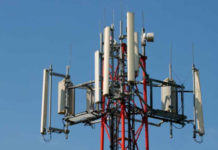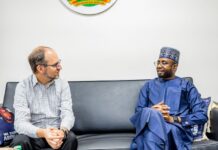NIGCOMSAT: More than Just Monitoring Satellites
By Fom Gyem
TECHDIGEST – At an inter-governmental summit in Addis Ababa in 1976, the then head of the state of Nigeria informed member nations of the Economic Council of Africa/Organization of Africa Union (ECA/OAU) about the history of satellites.
The Federal Government created a development plan to invest N10 million between 1976 and 1980.
After carefully weighing various policy options, the Federal Ministry of Science and Technology, which had previously been a council in 1970, was elevated to the status of a full-fledged ministry in 1980. The National Space Research and Development Agency was later separated from the ministry in 1988.
On September 26, 2003, at Plesetek, Russia, the Federal Government launched the first satellite, NigSat-1, into orbit after certain specialists had received training at Surrey Satellite Technology in London.
NigSat-1 is one of the five disaster monitoring satellites that make up the Disaster Monitoring Constellation network. When disaster monitoring is required, the satellites will communicate with one another and share information.
However, the second communication satellite (Nigcomsat), which was launched in May 2007, was lost owing to a break in the fuel supply link of the panel that resulted in a solar flare. The first satellite, NigSat-1, was designed to live for five years but is still operating in orbit today.
The launch of NigComSat-1R in 2011, after the incorporation of the Nigerian Communications Satellite Limited (NIGCOMSAT) in 2006, was critical for both the country and the world. Another significant accomplishment for Nigeria was the launch that took place at Yasny, which is about a two-hour flight from Moscow, the Russian capital.
Also noteworthy is the fact that the NigComSat-1R point, a 2.5-meter high spatial resolution sensor, was manufactured and designed entirely by Nigerian engineers.
The satellites can be used for demography, including the planning and mapping of population surveys, the mapping of census enumeration areas, the planning and monitoring of rural and urban growth, and the provision of early warnings for natural disasters like floods, earthquakes, volcanic eruptions, and storms.
Over places that terrestrial network carriers are unable to cover, NigComSat-1R offers omnipresent high-speed coverage. NigComSat-1R will always provide consistent, dependable, and fast internet services at an affordable price, even in the most distant areas of Nigeria or West Africa.
High-speed data and video Internet connections, cost-effectiveness, and security are all features of their services. The solutions are customized for the best possible delivery in applications for communications, disaster recovery, and security.
Read Also:
NigComSat-1R provides transponder leasing services on Ku-band, C-band, and Ka-band platforms. In addition to greater look angles and lower latency for intra-African communications traffic, 28 transponders and 7 antennas ensure stronger footprints and center beams spanning Africa, Europe, and Asia.
Broadcasters rely on NigComsat-1R to transmit a variety of media content to their customers’ homes, including normal TV, HDTV, and Ultra HD channels, thanks to more than 50 DTH platforms. The platform offers video-on-demand programming in addition to free-to-air, free-to-view, and pay-tv channels.
NigComSat-1R offers locally produced, ground-breaking, value-added services that take advantage of experience to address industry-specific needs and raise the quality of our satellite communications services. It also contributes to the provision of services that improve efficiency and procedures at work.
NigComSat-1R, Nigeria’s only communications satellite will outlive its usefulness by 2026, meaning that the satellite will expire by then.
The relentless efforts of Prof. Ibrahim Pantami, Minister of Communications and Digital Economy, in building a digital Nigeria as well as supporting NIGCOMSAT in the growth of the nation’s Gross Domestic Product (GDP) has leveraged the Nigerian Satellite (NigComSat-1R) to deepen broadband penetration in the country.
He said this in Abuja during the formal announcement of the National Policy on VSAT installation essential skills for Nigerians and the flag-off of the policy implementation through the training of 600 youths nationwide.
According to Pantami, the NigComSat-1R is a crucial piece of national infrastructure that the government wishes to use to improve broadband connection and benefit rural and underserved regions.
“The Nigerian Satellite (NigComSat–1R) is one of the critical national (solid) infrastructures under the purview of the Federal Ministry of Communications and Digital Economy that can be leveraged to deepen broadband penetration as well as to deliver Direct to Home (DTH) services in the country.”
The minister noted that broadband connectivity plays a critical role in the development of Nigeria’s digital economy, and said: “We are developing skill acquisition policies for the various infrastructure required to drive the digital economy.”
He further, asserts that filling the capacity gap in satellite-based service delivery is now seen as an urgent necessity to improve community quality of life, particularly in rural and remote areas where the majority of the population resides.
I join other optimistic citizens to advocate that NIGCOMSAT should face its primary purpose of commercializing Nigeria’s space products and soon, I believe, we would tell our own success story in space.
Fom Gyem writes from Wuye District, Abuja



















